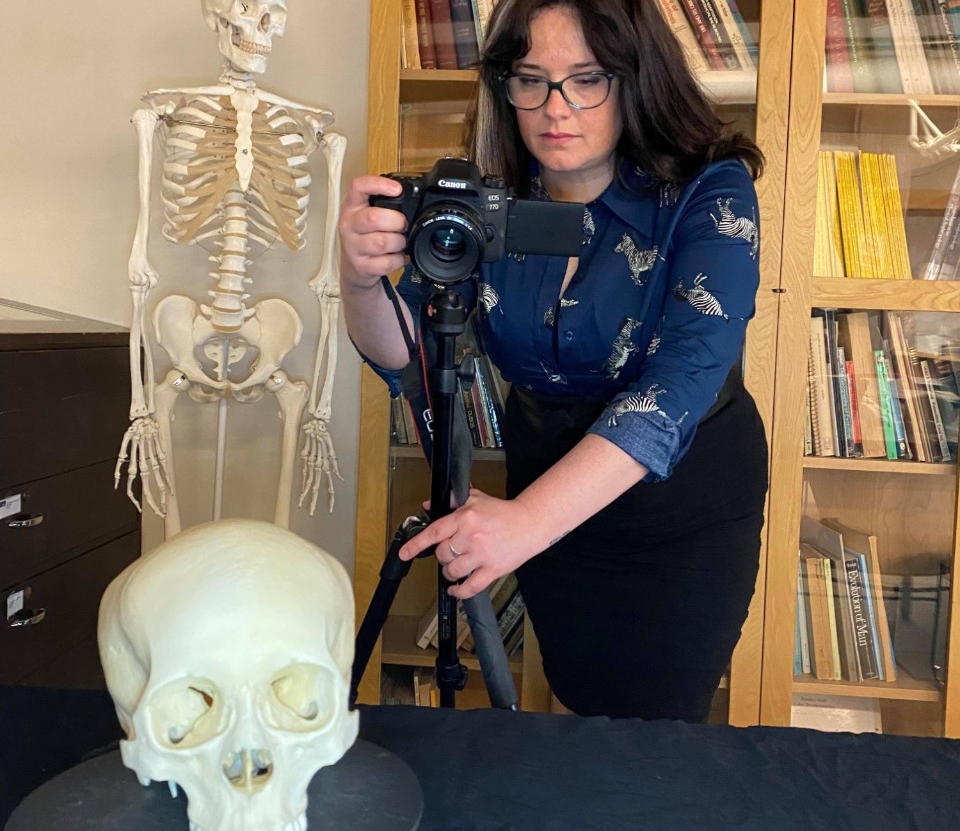
Kimberly Plomp
'Who were the Anglo-Saxons?' is a question that has been debated for many years-and one that researchers from Simon Fraser University and the University of Sydney may have helped resolve. By exploring a new line of evidence-the three-dimensional analysis of skeletal remains-researchers have found that Anglo-Saxon identity had more to do with shared language and culture than shared ancestry.
Although their origins can clearly be traced to a migration of Germanic-speaking people from mainland Europe between the 5th-7th centuries AD, the number of individuals who settled in Britain is still contested, as is the nature of their relationship with the pre-existing inhabitants of the British Isles, most of whom were Romano-British.
The reason for this uncertainty is the apparent contradictory nature of the available evidence. For example, historical documents imply that the incomers were not only numerous, but more or less completely replaced the Romano-British.
In contrast, isotope ratios extracted from Anglo-Saxon skeletons appear to indicate that the incoming population was relatively small in size. This implies that, instead of wholesale population replacement, the indigenous population adopted Anglo-Saxon language and culture.
"Palaeoanthropologists have found that when the base of the human skull is analysed in 3D, it can be used to track relationships among human populations in a similar way to ancient DNA," explains Plomp, a postdoctoral researcher in SFU's Department of Archaeology. "Based on this, we collected 3D data from suitably dated skeletal collections from Britain and Denmark, and then analysed the data to estimate the ancestry of the Anglo-Saxon individuals in the sample."
Plomp and her colleagues found that between two-thirds and three-quarters of early Anglo-Saxon individuals were of continental European ancestry, while between a quarter and one-third were of local ancestry. When they looked at skeletons dated to the Middle Anglo-Saxon period (several hundred years after the original migrants arrived), they found that 50-70 per cent of the individuals were of local ancestry, while 30-50 per cent were of continental European ancestry.
"This probably indicates a change in the rate of migration and/or local adoption as time passed." says prof. Collard, the Canada Research Chair in Human Evolutionary Studies at SFU and a co-author on the paper.
"One of the main take-home messages of our study is that the Anglo-Saxon kingdoms of early medieval Britain were strikingly similar to contemporary Britain-full of people of different ancestries sharing a common language and culture," says professor Keith Dobney of the University of Sydney, who collaborated on the study with Plomp and Collard.
Funders of the study include a Marie Skłodowska-Curie actions (Horizon 2020) fellowship, the Social Sciences and Humanities Research Council of Canada, the Canada Research Chairs Program, the Canada Foundation for Innovation, the British Columbia Knowledge Development Fund, and SFU.
The complete research article can be found here.






